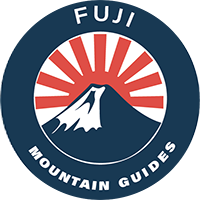- Mount Fuji
- Japan’s Mt. Fuji is an active volcano about 100 kilometers southwest of Tokyo. Commonly called “Fuji-san,” it’s the country’s tallest peak, at 3,776 meters. A pilgrimage site for centuries, it’s considered one of Japan’s 3 sacred mountains, and summit hikes remain a popular activity. Its iconic profile is the subject of numerous works of art, notably Edo Period prints by Hokusai and Hiroshige.
- Mount Fuji is an attractive volcanic cone and a frequent subject of Japanese art especially after 1600 when Edo (now Tokyo) became the capital and people saw the mountain while traveling on the Tōkaidō road. The mountain is mentioned in Japanese literature throughout the ages and is the subject of many poems. One of the modern artists who depicted Fuji in almost all her works was Tamako Kataoka.
- The summit has been thought of as sacred since ancient times and was forbidden to women until the Meiji era in the late 1860s. Ancient samurai used the base of the mountain as a remote training area, near the present-day town of Gotemba. The shōgun Minamoto no Yoritomo held yabusame in the area in the early Kamakura period.
- The first ascent by a foreigner was by Sir Rutherford Alcock in September 1860, who ascended the mountain in 8 hours and descended in 3 hours. 427 Alcock's brief narrative in The Capital of the Tycoon was the first widely disseminated description of the mountain in the West. 421–27 Lady Fanny Parkes, the wife of British ambassador Sir Harry Parkes, was the first non-Japanese woman to ascend Mount Fuji in 1867. Photographer Felix Beato climbed Mount Fuji two years later.
